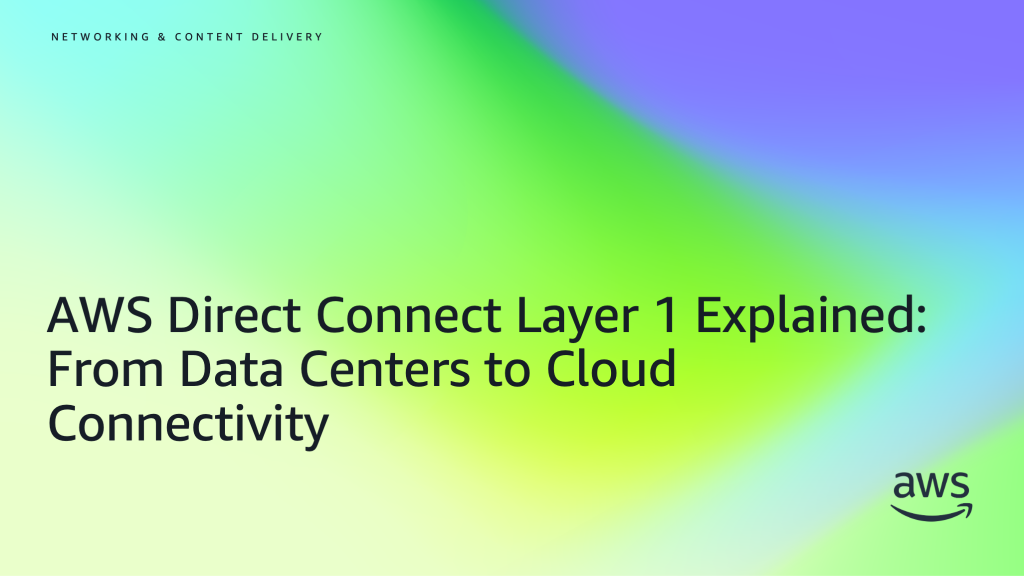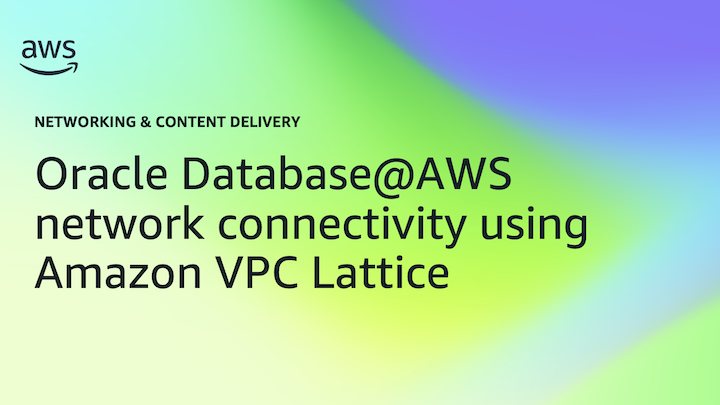Networking & Content Delivery
Category: Networking & Content Delivery
Securely Access Amazon FSx for Windows File Server using AWS Verified Access
Introduction In this post, I describe how to use Amazon Web Services (AWS) Verified Access (AVA) to securely access an Amazon FSx for Windows File Server file share. You will learn how to configure and deploy AVA endpoints, and connect to your FSx file share from your remote computer using the AVA Connectivity client. This […]
A Lemongrass success story: Enhancing Multi-Region SD-WAN failover with AWS Cloud WAN
Managing multi-Region network connectivity at scale is a critical challenge for modern enterprises. At Lemongrass Consulting, we enhanced our Amazon Web Services (AWS) network architecture by implementing AWS Cloud WAN. This implementation enabled intent-based routing between multiple AWS Regions while providing seamless on-premises integration through SD-WAN in our multi-Region AWS environment. Throughout this transformation, we […]
Streamlining multi-VPC DNS management with Amazon Route 53 Profiles and interface VPC endpoint integration
Managing DNS configurations across multiple VPCs and accounts requires thoughtful architectural planning, especially for organizations leveraging AWS PrivateLink interface endpoints for various AWS services. Organizations are continuously looking for ways to streamline these configurations while maintaining operational efficiency and security. For enterprises using Amazon Web Services (AWS) PrivateLink interface endpoints (such as AWS Lambda, Amazon […]
AWS Direct Connect Layer 1 Explained: From Data Centers to Cloud Connectivity
In today’s cloud-first world, resilient connectivity between your on-premises infrastructure and AWS, along with a deep understanding of its implementation, is critical for your business success. For many organizations, AWS Direct Connect serves as their primary connectivity solution. Starting at the physical layer (Layer 1), it operates across the first three layers of the Open […]
Amazon VPC Lattice support for RDS Multi-AZ
In this post we review how Amazon VPC Lattice can provide simple and secure access to an Amazon RDS Multi-AZ deployment using Amazon Resource Names (ARNs). Prerequisites We assume you are familiar with Amazon Virtual Private Cloud (VPC), and VPC Lattice concepts and capabilities. If you are unfamiliar with VPC Lattice please review Amazon VPC […]
Oracle Database@AWS network connectivity using Amazon VPC Lattice
As Oracle Database (ODB)@AWS becomes generally available, we’re introducing new network connectivity capabilities that streamline connectivity between Oracle Exadata infrastructure (managed by OCI) inside Amazon Web Services (AWS) data centers and users’ AWS and on-premises networks. These new features include Amazon VPC Lattice integrations for hybrid connectivity from ODB networks, and native secure access between […]
Boost application performance: Amazon CloudFront enables HTTPS record
Amazon CloudFront announced support for Amazon Route 53 HTTPS DNS alias record across its global network, enabling clients to discover the optimal HTTP protocol during the initial DNS resolution phase rather than in a subsequent connection step. This helps users improve performance and security, and simultaneously reduce operational expenses. This post explores the implementation details, […]
Scaling your hybrid DNS setup with Amazon Route 53 Resolver endpoint metrics
This post demonstrates how to use a new Amazon CloudWatch metric for Amazon Route 53 Resolver endpoints to make informed scaling decisions. We show you how to monitor Resolver Networking Interface (RNI) capacity and implement a scalable architecture that makes sure of reliable DNS resolution across your hybrid infrastructure. As organizations expand their hybrid cloud […]
Building secure multicloud access with AWS Client VPN and AWS Site-to-Site VPN
In today’s rapidly evolving cloud landscape, organizations are increasingly adopting multicloud strategies for several compelling reasons. Following mergers and acquisitions, companies need to integrate and maintain existing cloud solutions from both organizations. Different business units within an organization often have varying technical requirements and expertise, leading them to prefer specific cloud providers. For highly regulated […]
Addressing private IPv4 exhaustion with AWS Cloud WAN service insertion
In this post, we describe how you can use Amazon Web Services (AWS) Cloud WAN with service insertion to centralize your private NAT Gateways and PrivateLink to effectively and efficiently address private IPv4 exhaustion. We demonstrate how you can maximize the usage of available IP space while minimizing cost impact. Private IPv4 space, defined in […]









